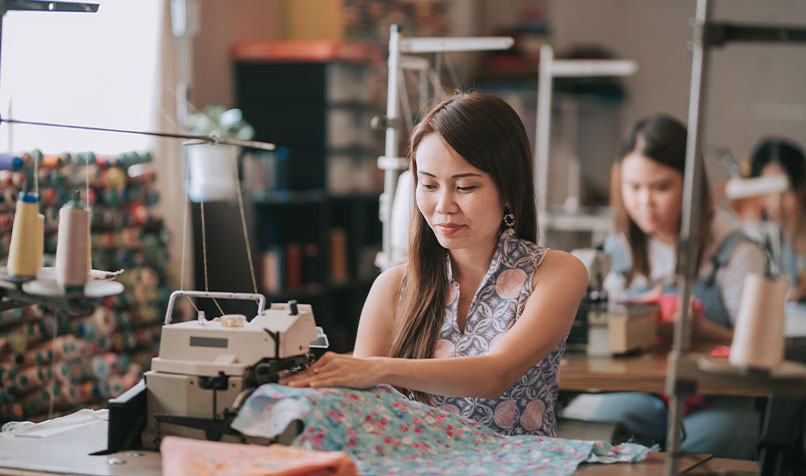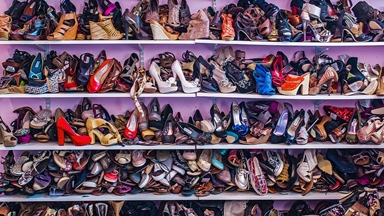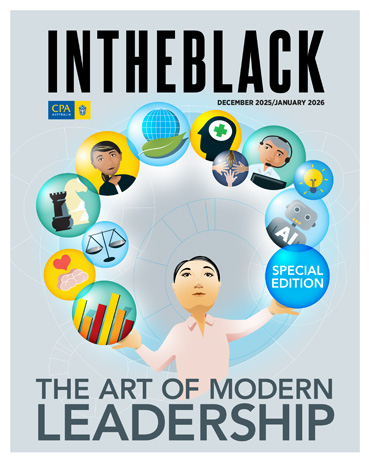Loading component...
At a glance
- If left unchecked, the fashion sector will contribute more than a quarter of the world’s carbon emissions by 2050.
- Initiatives like the Seamless clothing scheme are promoting alternative approaches to a reliance on fast fashion.
- Recent studies suggest that integrating sustainable practices enhances profitability.
It may be intrinsically connected to style and innovation, but the fashion industry has a decidedly unfashionable environmental and social footprint. Every garment carries the weight of its production, and the consequences extend far beyond the latest trends.
Currently responsible for up to 10 per cent of global greenhouse gas emissions, the fashion sector is on a path to contribute 26 per cent of the world’s carbon emissions by 2050 according to the Ellen MacArthur Foundation’s A new textiles economy: Redesigning fashion’s future report. The industry also ranks among the top three water consumers, alongside technology and agriculture.
However, it’s not just carbon and water that is a problem – about 500,000 tonnes of microfibre from clothing ends up in the ocean each year, equating to three million barrels of oil in pollution.
Another challenge is bridging the gap between sustainability and profitability.
However, recent studies suggest that integrating sustainable practices can enhance profitability in the long run. For instance, brands that prioritise sustainability often see an increase in customer loyalty, as more consumers are inclined to support companies that align with their values.
“People have been outraged for decades now and we are at a point where the purchasing power of consumers is so powerful. There are more and more people who won't support companies that don't show their ESG efforts,” says Rachel Reilly, national manager at Ethical Clothing Australia.
Additionally, investing in sustainable technologies and practices can lead to cost savings through improved efficiency and reduced waste. There are significant moves being made in Australia to change the way both consumers and brands approach fast fashion.
Some examples include Cotton On, which produces The Good Report each year detailing its sustainability responses and outcomes, and Country Road, which has a clearly articulated strategy around sustainable sourcing and use of cotton.
ESG and fashion: collective approach needed
In Australia, where shoppers buy an average of 53 garments each per year, almost 200,000 tonnes of clothing ends up in landfill.
Yet, efforts are underway on various fronts. Brands are increasingly adopting circular business models focused on reuse, repair and recycling. Schemes where companies collect old clothes for fibre recycling or repurposing are also becoming more widespread, and consumers are embracing second-hand shopping (or ‘recommerce’) and clothing rental services.

Nevertheless, lasting change needs to be driven by a collective effort, says Ainsley Simpson CEO of Seamless, Australia’s clothing product stewardship scheme. Greater industry-wide collaboration, consumer awareness and systemic change in production and consumption practices are all crucial to address the negative impact of something everyone takes part in, one way or another.
“Seamless is the world's first circular product stewardship scheme and while we are making progress in addressing clothing waste, this is a global issue, and we are part of a global supply chain. It’s important to recognise that no organisation or nation has got this nailed. If it was easy, it would already be done,” she says.
Seamless aims to change the industry's approach to clothing production, use, reuse and recycling. The goal is to achieve clothing circularity by 2030, with 60 per cent of the industry onboard to divert 120,000 tonnes of end-of-life garments from landfill by 2027. After starting with just eight founding members, it now includes more than 70 major clothing brands, including an increasing number of uniform and work-wear brands.
“Our members are committed to taking genuine responsibility for their products’ life, which means that sustainability is actually integrated into the way in which that organisation operates across all of its financial protocols, governance and decision-making procedures.”
ESG Reporting and Disclosure: A Comprehensive Guide for Accountants
Counting the cost of ethical fashion
Senior finance leaders are recognising that investing in ESG initiatives can lead to long-term profitability. Australian activewear business Lorna Jane joined the Seamless scheme early on. CFO Fiona Hochmuth FCPA says while initial costs may be high, the adoption of sustainable materials, ethical labour practices and energy-efficient technologies can reduce risks and enhance brand loyalty.
“There is the need to balance profitability with sustainability, as competitive markets put pressure on pricing,” she says.
“The key financial challenge lies in the upfront investment required for ESG initiatives, such as transitioning to sustainable materials, enhancing production processes and conducting supplier audits. These initiatives often come with higher initial costs, but they are crucial for long-term success,” she says.
The installation of solar panels at the Lorna Jane head office in 2015 naturally required an initial investment, but has since significantly reduced energy costs over time by lowering reliance on non-renewable energy, says Hochmuth.
"Seamless is the world's first circular product stewardship scheme and while we are making progress in addressing clothing waste, this is a global issue, and we are part of a global supply chain. It’s important to recognise that no organisation or nation has got this nailed. If it was easy, it would already be done."
It not only provides reductions in cost, it gives the brand a tangible way to show its commitment to sustainability, she says.
“We show stakeholders that sustainable practices build brand loyalty, as more consumers are prioritising environmentally responsible brands. These practices also reduce long-term risks by ensuring compliance with regulations and creating more resilient operations – which ultimately support profitability,” she says.
Lorna Jane also requires suppliers to provide annual ethical audits, which allows the business to monitor risks related to labour practices, environmental impact and governance across the supply chain.
“We use Fair Supply [an ESG risk management and compliance company] for carbon accounting and managing our non-trade procurement suppliers, helping us track and reduce our carbon footprint.
In addition, we report under Australia’s Modern Slavery Act 2018, which ensures we have a due diligence process in place to identify and address any potential risks of exploitation in our supply chains,” she says.
Finance professionals are in a unique position to help their clients identify elements of a supply chain that may indicate unsafe work practices and exploitation, adds Reilly.
“Accountants and financial professionals can play a role in identifying potential exploitation by scrutinising the feasibility of very low garment prices in their clients’ financial data, for example,” she says.
“One of the guiding tools that they have to try and understand whether a garment can be made for a certain cost is the value volume. If it is a low price then it's an indicator that there might be some exploitative labour conditions or ‘invisible people’ in the supply chain.”
ESG approach to fashion in Asian economies

Following in the footsteps of markets like Mainland China, Korea and Taiwan – which began their move from agrarian-based economies to manufacturing on the back of textile and garment manufacturing – Vietnam, Cambodia and Bangladesh are now increasingly involved in the global supply chains that drive fast fashion.
With strategic investments in manufacturing capabilities and a growing focus on sustainability, Vietnam, for example, has positioned itself as a key player in the global textile market, now in fourth spot in global clothing exports, according to 2023 World Trade Figures.
While this expansion has stimulated economic growth and increased export opportunities, associate professor Rajkishore Nayak, and program manager of the Bachelor of Fashion (Enterprise) program Corinna Joyce from RMIT University in Vietnam, note that there are challenges in establishing and maintaining acceptable labour conditions and sustainability standards.
"Accountants and financial professionals can play a role in identifying potential exploitation by scrutinising the feasibility of very low garment prices in their clients’ financial data, for example."
Due to rising labour costs in China, many foreign investments are shifting to Vietnam because of favourable government and labour policies, says Nayak.
“This influx of investment has led to a growing number of industries, which in turn is contributing to significant environmental challenges, including water, air and land pollution,” he says.
“While larger global brands sourcing from Vietnam demand compliance with environmental and social standards, smaller local manufacturers often lack the resources and incentives to adopt more sustainable practices,” says Nayak.
Labour issues also persist, with concerns around living wages, excessive overtime and limited rights for workers, says Joyce. She believes that overall, Vietnam is committed to ethical and sustainable practices, but there is always the challenge of subcontracting, which she says complicates the supply chain for major brands.
“There are some brands that provide workers with benefits, such as an extra month's salary, childcare facilities, health insurance and transport. But some local brands will rely on overseas workers, whom they pay less and do not provide the same benefits to.”
However, a case study on female garment workers in Bangladesh shows that employment in the ready-made garment (RMG) sector provides women with increased economic freedom and empowerment, as well as valuable skills and knowledge.
How Gen Z refashioned a new "business casual"
Holding brands to ESG account
Labour issues are not limited to developing countries. There can also be labour and workplace issues in companies operating in Australia and other developed nations.

Rachel Reilly, national manager of Ethical Clothing Australia, notes that their accreditation program helps businesses understand and comply with existing Australian labour laws “which can be complex due to multi-layered clothing supply chains. This includes identifying ‘outworkers’ – often migrant women working from home – who are at risk of exploitation,” she says.
Katherine Halliday, advocacy coordinator at Baptist World Aid and researcher on the biennial Ethical Fashion Guide, says holding brands to account publically is another way of raising awareness of the poverty vulnerable fashion-industry workers may live in.
Halliday notes that the guide aims to move the needle on supply chain practices by working with companies and equipping consumers with detailed assessments of various fashion brands.
“Ultimately, companies will be driven by their bottom line and consumers' choices about whether they shop with a certain brand or not. These factors will drive how committed a company is to making progress,” she says.
The guide ranks over 450 major fashion brands in Australia with a score out of 100, rating them on criteria such as labour rights, environmental impact and supplier engagement, helping consumers make informed choices about their clothing purchases and speak out to their favourite brands.
“We do believe that by giving global citizens the company scores, we're able to amplify the voices of everyday Australians who say that we do care about a company's purchasing practices and it does affect where we choose to shop,” she says.

